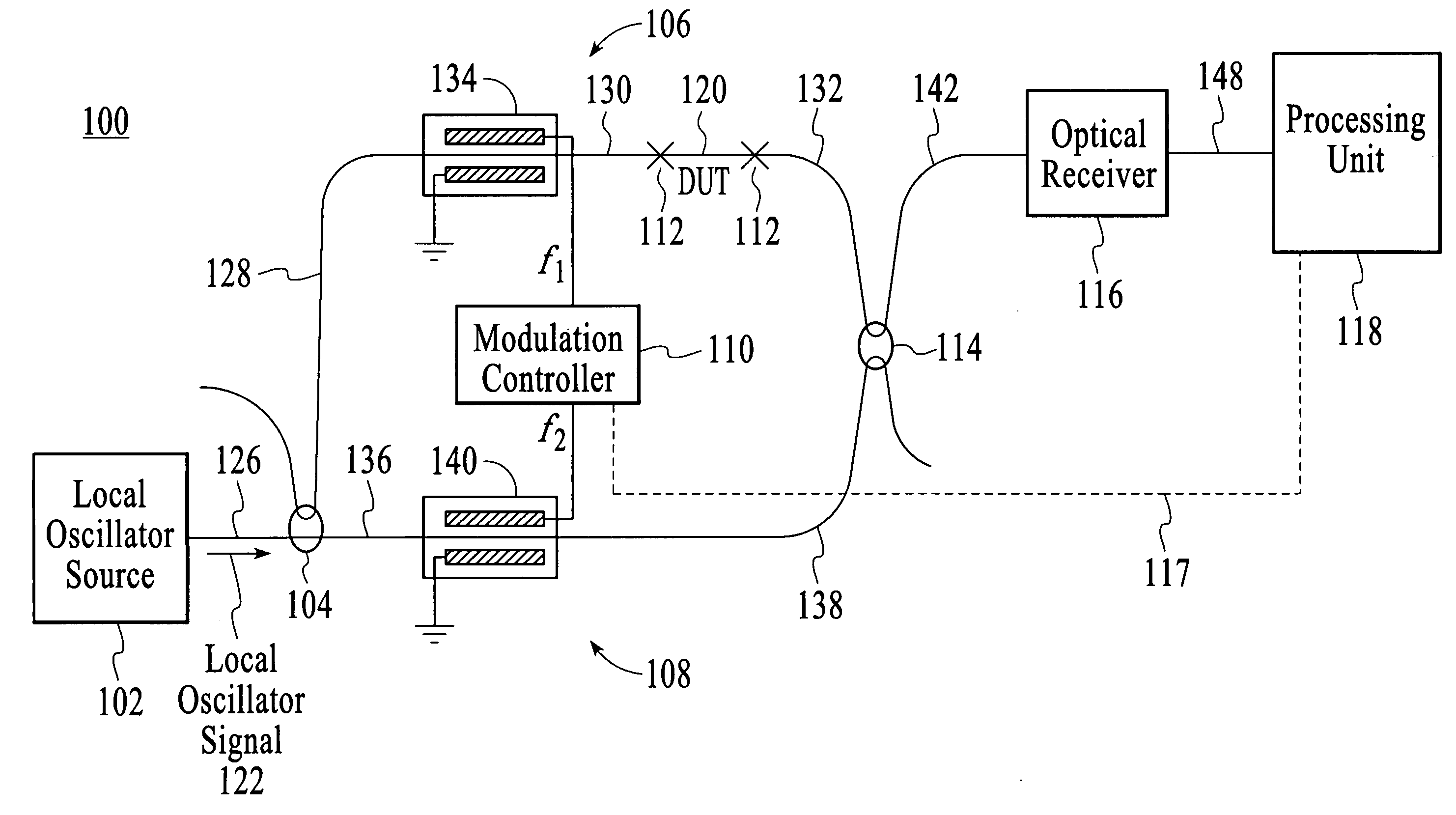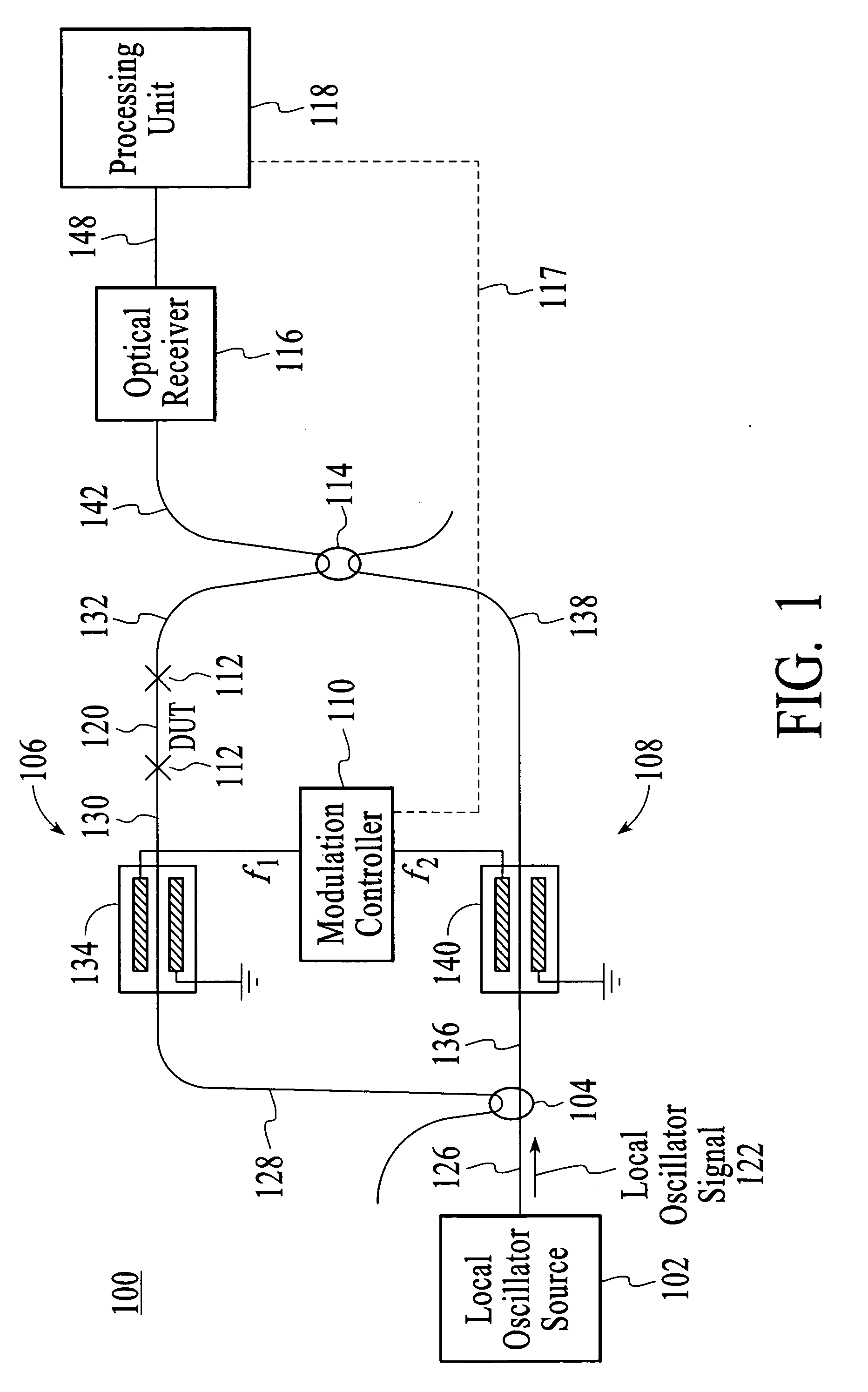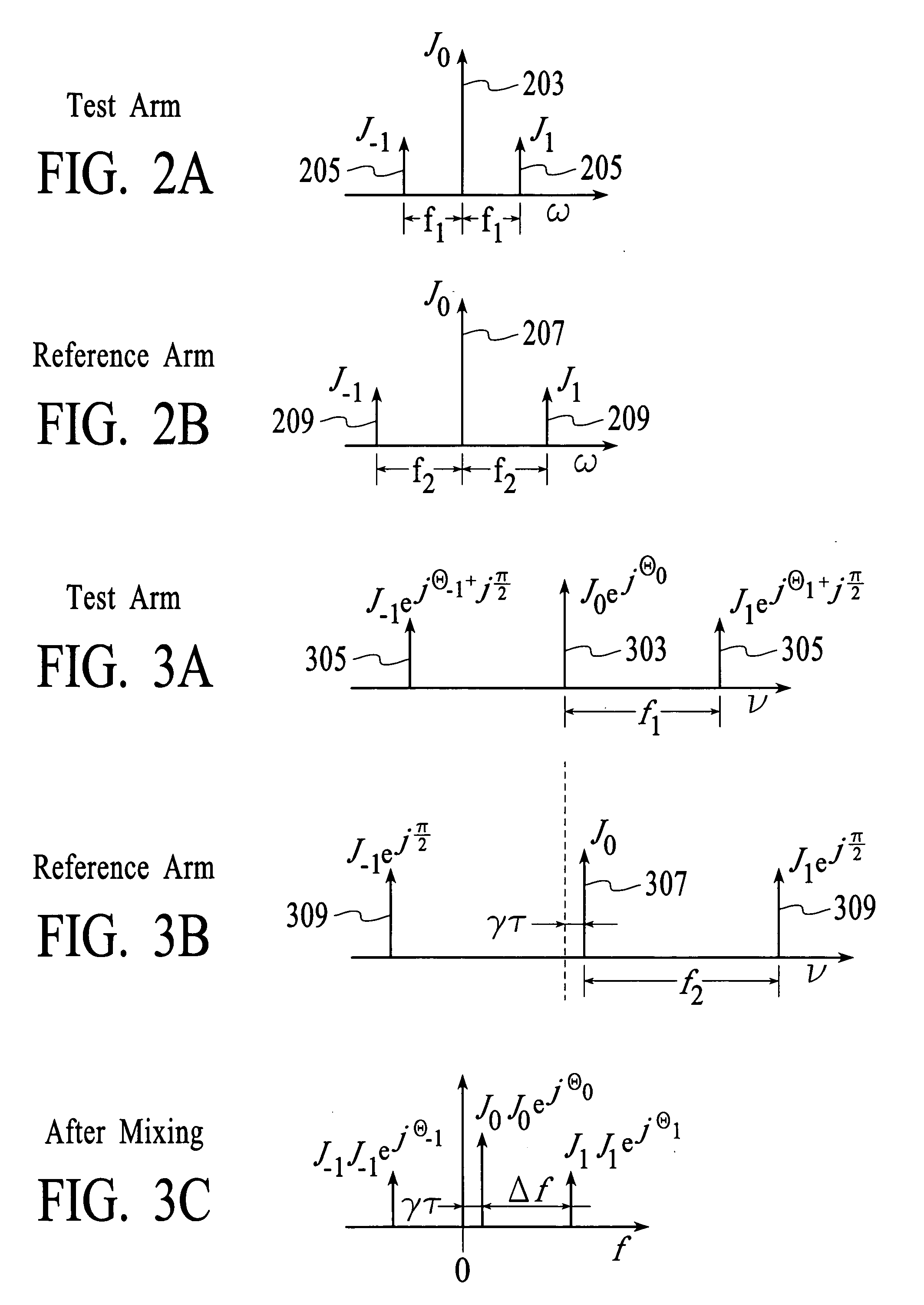Heterodyne optical network analysis that utilizes signal modulation
a signal modulation and heterodyne technology, applied in the direction of optical apparatus testing, instruments, structural/machine measurement, etc., can solve the problems of group delay characterization and insensitive to environmental and physical instabilities
- Summary
- Abstract
- Description
- Claims
- Application Information
AI Technical Summary
Problems solved by technology
Method used
Image
Examples
Embodiment Construction
[0026]FIG. 1 depicts an embodiment in accordance with the invention of a system 100 that is used to measure the amplitude, phase, and group delay properties of a DUT. The system includes a local oscillator source 102, an optical splitter 104, a test arm 106, a reference arm 108, a modulation controller 110, a DUT interface 112, an optical combining unit 114, an optical receiver 116, and a processing unit 118. For description purposes, the system is connected to a DUT 120 although the DUT is not necessarily a part of the system. It should be noted that throughout the description similar reference numbers may be utilized to identify similar elements.
[0027] Referring to FIG. 1, the local oscillator source 102 generates a local oscillator signal 122. In an embodiment, the local oscillator source is a highly coherent tunable laser that is swept over a range of 20 GHz or greater. The swept laser could be continuously swept. During DUT characterization, the local oscillator signal is typi...
PUM
 Login to View More
Login to View More Abstract
Description
Claims
Application Information
 Login to View More
Login to View More - R&D
- Intellectual Property
- Life Sciences
- Materials
- Tech Scout
- Unparalleled Data Quality
- Higher Quality Content
- 60% Fewer Hallucinations
Browse by: Latest US Patents, China's latest patents, Technical Efficacy Thesaurus, Application Domain, Technology Topic, Popular Technical Reports.
© 2025 PatSnap. All rights reserved.Legal|Privacy policy|Modern Slavery Act Transparency Statement|Sitemap|About US| Contact US: help@patsnap.com



